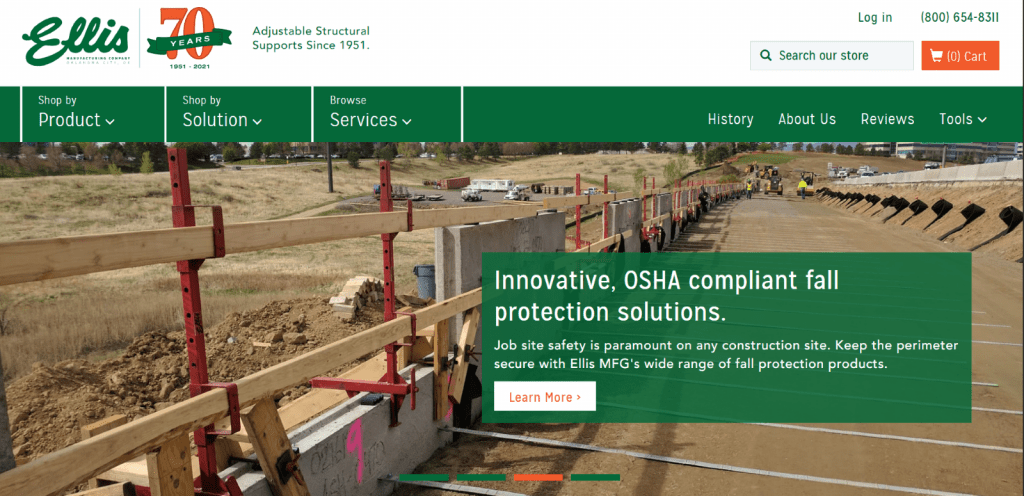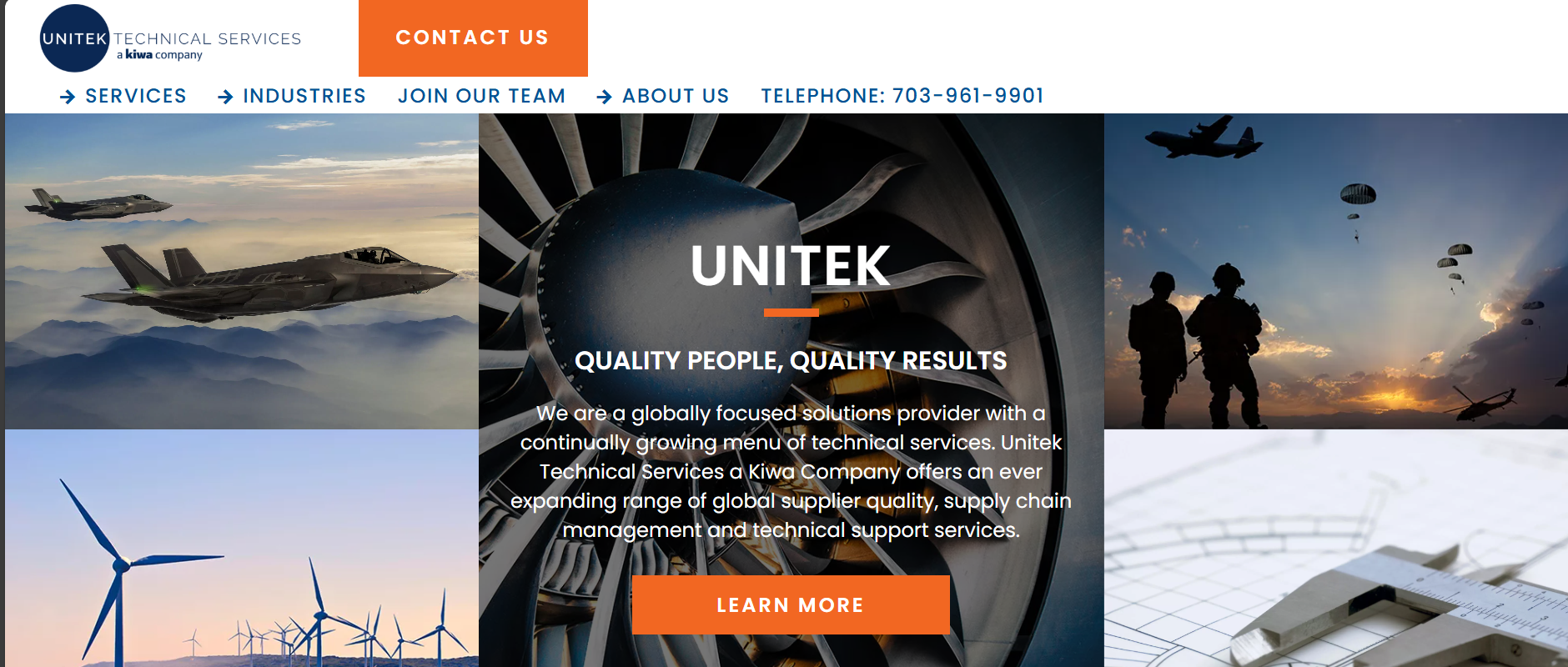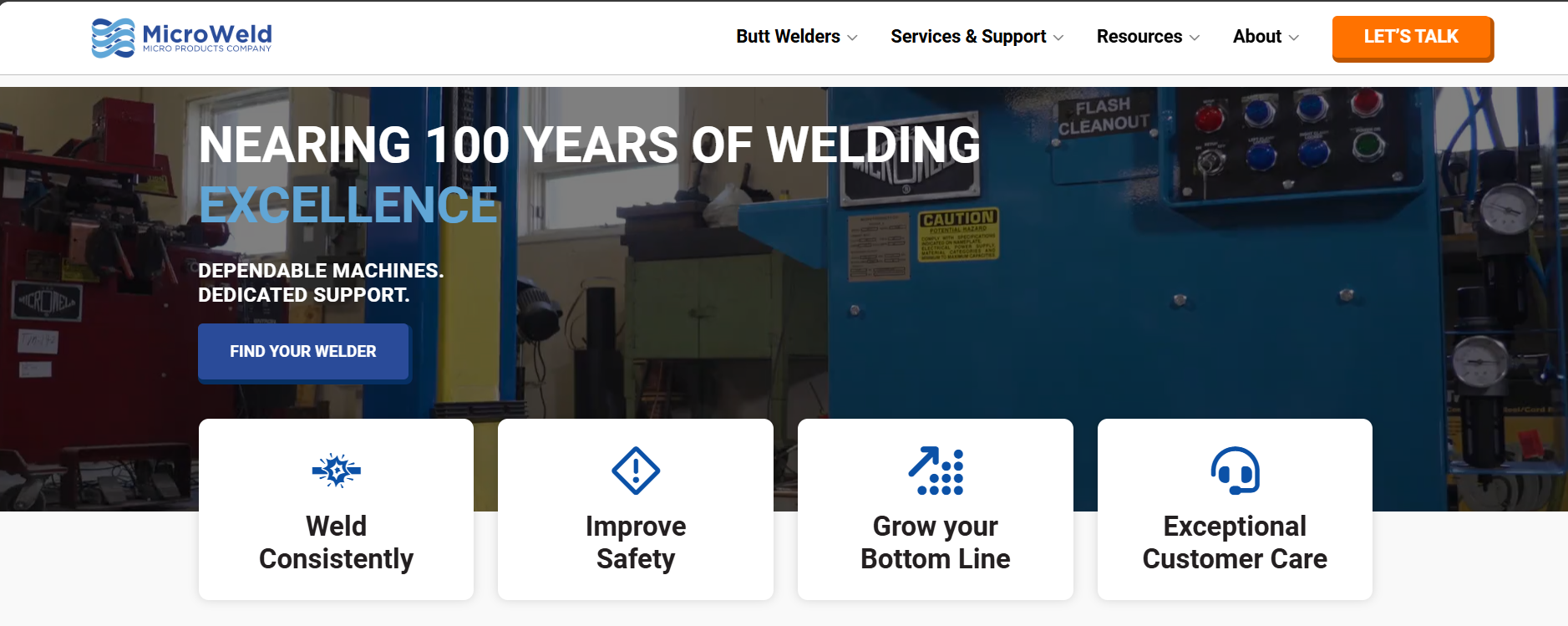Key takeaways:
- Manufacturing businesses will need a website to thrive on the internet.
- Effective manufacturing website design should be consistent with your brand, intuitive, secure, and responsive.
- Creating a fully functioning and well-designed manufacturing website involves careful planning and strategizing.
In the past, manufacturing businesses could only reach potential customers who were within the local area. But with the internet, they can now reach their target audience anywhere in the world. This has allowed them to grow their businesses and compete with larger, more established companies in the manufacturing industry.
Launching a website may sound intimidating at first, but using website builders or a pre-built manufacturing website template can make it incredibly easy.
Read on to learn how to build a manufacturing website that’s attractive and functional.
3 best manufacturing website design examples
Before we dive into the primary design elements of a good industrial website design and how to make one, let’s look at a few successful examples of top manufacturing websites:
- Ellis Manufacturing
- NTS Unitek
- Microweld
Ellis Manufacturing

Thanks to its sleek design and intuitive drop-down menu, customers will find Ellis Manufacturing’s website visually appealing and easy to use. The search bar, conveniently located beside the checkout cart, adds to a positive user experience because it helps visitors locate any service they need.
NTS Unitek

Unitek’s website uses high-quality images and clear copywriting to communicate its services immediately to potential customers. The strategically placed contact details within the navigation bar serve as direct and immediate calls to action.
MicroWeld

MicroWeld’s website immediately highlights the company’s expertise, quality service, and reliable customer support. The site is direct about its offerings and strategically features call-to-action buttons throughout. Like the previous example, MicroWeld includes a prominent search bar at the top for easy customer navigation.
5 key elements of a good manufacturing website
Now that we’ve reviewed several manufacturing websites, let’s pinpoint the key elements they have in common and understand their practical significance when constructing your own.
- Intuitive navigation
- Responsive web design
- Secure
- Optimized for search engines
- Consistent branding
Intuitive navigation
All the examples above have easy-to-navigate and intuitive layouts that help users effortlessly find the information they’re looking for. Each website also has a navigation bar with a clear and logical menu structure and concise labeling of navigation links.
Aside from the navigation bar, you can also add a search bar on your website to further enhance user experience so visitors can quickly locate specific products, technical data, or contact information.
Responsive web design
With the growing use of mobile devices, it’s important for a manufacturing website to be responsive. This means that your website adapts and functions smoothly on any device, whether it’s a smartphone, tablet, or desktop computer.
Ensuring fast page loading times on mobile devices and touch-friendly navigation enhances the overall mobile experience and helps cater to a broader audience.
Secure
Aesthetics aside, a good manufacturing website should also prioritize user data and transaction security. To keep your website secure, make sure you’re:
- Using HTTPS encryption
- Regularly updating software and plugins
- Implementing strong authentication measures
- Employing firewalls to safeguard against cyber threats
You can also communicate your commitment to security by having a clear and concise privacy policy and displaying trust seals on your website. These measures can help to instill confidence in visitors and potential customers.
Optimized for search engines
If you want your potential customers to find your manufacturing website, you need to optimize your website for search engines. This involves implementing effective SEO strategies, such as keyword research, on-page optimization, technical SEO improvements, and quality content creation, to increase your website’s visibility in search engine results pages (SERPs).
Consistent branding
For a strong brand identity, maintain a consistent image, tone, and style across all your branding materials. It means your online presence should match your marketing materials so that everything is connected and reflects your brand identity as a whole. This way, it’s easier for potential customers to easily remember and trust your brand.
For example, let’s say you’re building a website for manufacturing companies that produce highly specialized electronic components.
Here’s how your brand could look:
- Images: They would likely maintain a consistent image of precision and technological advancement through detailed product close-ups and diagrams on their website and technical datasheets.
- Tone: Their content tone would be consistently technical and authoritative. Additionally, they would focus on using precise terminology, specifications, and performance metrics.
- Style: The website design style might involve a clean, technical design that consistently uses specific technical fonts and a color scheme that conveys accuracy and reliability, like cool blues and greys.
Must-have pages to include when building your manufacturing website
Your manufacturing website serves as an online brochure for your products and services, which is why you should strategically plan its structure to effectively communicate your value proposition and guide potential clients to the information they need.
This involves including key pages that show your expertise, such as:
- Homepage
- About us
- Products and services
- Contact page
- Testimonials or portfolio
1. Homepage
The homepage of your manufacturing website is the first thing that site visitors will see, so it’s important to make a good impression. It should provide an overview of your business, showcase your unique selling points, and offer easy navigation to other key sections.
To make your homepage effective, use high-quality images, keep your company introduction short, and include call-to-action buttons. All these elements work together to create an informative and appealing homepage.
2. About us
The “About Us” page is an opportunity to tell your company’s story, values, and mission. It helps build trust and credibility by introducing the people behind the business and highlighting your experience and expertise in the manufacturing industry.
For example, your manufacturing company can list its certifications on the About Us page to demonstrate your reliability and commitment to industry standards and quality control. You could also include a brief company history and emphasize key milestones and the evolution of your capabilities.
For the visuals, include photos of key team members and your manufacturing facilities to help potential clients connect with the human elements of your business.
3. Products and services
This page should provide comprehensive information about your products and the services you offer. Make sure to include clear and concise descriptions of your products. Using high-quality images will help visitors visualize what they’re getting.
Organize your services in a way that makes sense for your target audience and consider adding case studies or examples to show how your products and services have helped other businesses.
4. Contact page
The contact page is a great way for potential customers to get in touch with you. Make it easy for them by including a contact form, your physical address, phone number, and email address. You can also consider integrating a map for directions to your factory’s physical location.
5. Testimonials or portfolio
Featuring a page dedicated to customer testimonials or a portfolio of past projects is an effective way to build trust. You can display good reviews that your satisfied clients have said, or share pictures and stories of projects your manufacturing company has done well.
When potential customers see real examples of your work and hear about other customers who are pleased with it, it can make them feel confident about choosing your business.
For more details on must-have website pages, read our article on What Pages Should a Business Website Have?
How to create a manufacturing website
To ensure your manufacturing website effectively represents your capabilities and attracts the right clients, you will need to follow a clear process. This section provides a step-by-step framework for building your site while covering key considerations at each stage of development.
- Register a domain name
- Find a website host
- Pick a website design template
- Create informative and engaging content
- Launch your website
- Promote your website
- Keep your website up-to-date
Step 1: Register a domain name
Your domain name is your website’s address on the Internet. It’s what people will type into their web browser to visit your site.
When choosing a domain name, there are a few things to keep in mind:
- Make your domain name relevant to your business. It should be relevant to your manufacturing business so that people can easily find it when they search for terms related to your industry.
- Keep it short and easy to remember. People should be able to remember your domain name easily so that they can come back to your website again and again.
- Avoid using hyphens or numbers. They can make your domain name difficult to remember and type.
- Choose a popular top-level domain (TLD). The top-level domain (TLD) is the part of the domain name that comes after the dot. Popular TLDs include .com, .net, and .org. . Popular TLDs include .com, .net, and .org.
If you’re having trouble coming up with ideas, our AI domain name generator can help. Just provide some keywords or brief descriptions, and it’ll suggest different domain name options for you.
Step 2: Find a website host
A website host is a company that stores your website’s files and makes them accessible to visitors. With us, you can register a domain and host your website in one place.
When choosing a website host, there are a few things to keep in mind:
- Reliability: Your website host should be reliable and have a good uptime record. This will help ensure that your website is available to visitors when they need it most.
- Speed: Your website host should have fast loading speeds. This will help improve the user experience and make your manufacturing website more likely to rank well in search engines.
- Features: Your website host should offer the features you need, such as email accounts, storage space, and bandwidth.
- Price: Your website host should offer a hosting plan that fits your budget.
Step 3: Pick a website design template
A website design template is a pre-made design that you can use to create your website. They can save you a lot of time and effort, as you don’t have to start from scratch.
We offer website templates that are specifically designed for manufacturing businesses. They are mobile-responsive, so they will display well and look good on any device and screen size. They also come with a variety of features, such as:
- Image galleries
- Contact forms
- Blog sections
- eCommerce functionality
Step 4: Create informative and engaging content
The content on your website is what will attract and keep visitors engaged. Make sure your content is informative and engaging, and that it is relevant to your target audience.
Here are some content ideas that you can share on your manufacturing website:
- How-to guides and tutorials: Create step-by-step guides or videos that demonstrate how to use your products effectively. These can be great resources for your customers and can showcase your expertise.
- Industry insights and trends: The manufacturing industry is constantly evolving, so it’s important to stay updated on the latest trends. One way to do this is to share articles or reports about the latest developments, trends, and innovations in the industry. This positions your company as knowledgeable and up-to-date.
- Videos and webinars: People love watching videos, so why not use them to promote your manufacturing business? You can create videos showcasing how your products are made and how they are in action or host industry-specific webinars. This is a great way to engage your audience and provide them with valuable information.
- Infographics: Infographics are effective in summarizing complex information or data into easy-to-understand visuals. They’re also highly shareable, so they can help you reach a wider audience. To create an infographic, start by identifying the key points you want to communicate. Then, use visuals to represent those points concisely. You can use charts, graphs, icons, and other elements to create an infographic that is both visually appealing and informative.
- Customer stories: Share success stories and experiences with your customers. For example, you could share a story about a customer who was able to increase their productivity by using your products. Or you could share a story about a customer who was able to save money by using your services.
Step 5: Launch your website
Once you have your content ready, it’s time to make your website live on the internet. Make sure your website has a domain name and a hosting provider. Also, remember that it should look good and optimized for all devices, browsers, and search engines.
Step 6: Promote your website
Promoting your manufacturing company’s website is crucial to attract potential clients and customers. There are several effective methods to do this:
- Social media: Share your manufacturing products and services on social media platforms like LinkedIn, Twitter, and Facebook. Use relevant hashtags to reach a wider audience.
- Online advertising: Show your ads to people who are actively looking for manufacturing products and services by using platforms like Google Ads. Target people who are searching for keywords related to your business, like “industrial plating services” or “plating industry.”
- Email marketing: Keep in touch with potential customers and partners by collecting their email addresses. Send them regular updates about your products and services, new arrivals, special offers, and more.
Step 7: Keep your website up-to-date
Once your website is up and running, it’s important to keep it fresh. That means adding new content regularly, removing old content that is no longer relevant, and making sure your website is secure and easy to use.
Here are some specific things you can do to keep your website updated:
- Add new content: This could be blog posts, articles, images, videos, or anything else that’s relevant to your audience. Keep your website fresh and interesting by adding new content on a regular basis.
- Secure your website: Use secure web practices, such as SSL certificates, HTTPS, and website backups. These features will help protect your website from hackers and other security threats.
- Monitor your website traffic: Keep an eye on how many people are visiting your website and where they’re coming from. This will help you understand what’s working and what’s not, so you can make the necessary adjustments to improve your website.
Frequently asked questions
The estimated cost of hiring a web designer varies based on what you want included in your site, but it’s expected to cost between $1,000 and $5,000 upfront, depending on the web designer’s company.
On average, it takes five to 14 weeks to build enterprise websites using a website builder. It varies depending on how complex the website will be. If built using a CMS, it will take between 13 and 22 weeks. Meanwhile, building an enterprise-level manufacturing site through coding will take 15 to 40 weeks.
Yes, you can use website builders, and while you may not get granular control and full customization as a fully coded website, they are still worth the investment.
Take your manufacturing business online
Having an online presence is essential for every business, particularly if you’re in the manufacturing industry. It’s the key to staying ahead of the competition and growing your business. And it all starts with building an effective website.
If you’re ready to build your manufacturing website, you can follow the steps above or talk to our experts who are ready to help build one for you.




